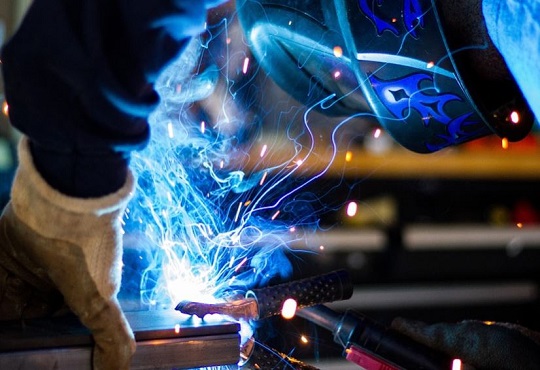Several Common Methods of Testing the Quality of Welds
cioreviewindia Team | Friday, 21 May 2021, 04:24 IST
 What method is best for checking the quality of welds and welding jobs?
What method is best for checking the quality of welds and welding jobs?
To answer this question, you need to be aware of certain principles and meet specific conditions.
The quality of welds often determines the quality of the product that is manufactured when welding different constituent materials to.
However, some considerations are vital to choosing the proper weld testing and inspection quality. These methods will vary depending on the type of welding technology used, the size of the welding, and the accompanying costs of testing, among other things.
This piece outlines the various techniques usually employed in testing and inspecting the quality of welds beginning with the different welding technologies available in the industry.
So, if you are ready, let's jump right in.
What's welding technology?
Manufacturing processes usually involve the joining of more than one material to form a product.
This joining often involves the use of heat, especially for metallic materials. The union of these materials with the help of heat or pressure is what is known as welding.
Welding has gone through a series of developmental stages, with the first evidence of welding dating back to more than 2,000 years with the Egyptians.
Like most inventions, science often plays an essential role in improving an invention as technology advances.
We know that today's welding technology has seen many enhancements and has improved beyond recognition from what it was when it was first invented.
Welding technology has advanced from crude metal smelting to x-ray welds and even further to robotic welding, which uses computer programs to control welding robots. Such advancements like this robotic welding have made welding safer.
Different techniques, methods, and procedures have come to be associated with welding. These procedures have come because of an increase in knowledge, which has made welding easier, faster, less expensive, and more quality.
How to check the quality after welding
With all the advancements in welding technology, it would only be a waste if there is no way to ascertain the quality of a welding job.
All the speed of welding and the safe welding procedures will not mean much without a way to check for the adequacy of welding done.
Think about it for a second.
A welding job that took half the usual time to complete will eventually result in a waste of energy, time, and even an increase in the cost of production if a defect was found in the welded joints at the point of installation or use.
Fortunately, there are standard methods you can use to check for the quality of the welded joints with high accuracy.
These methods are generally classified as either destructive or non-destructive methods.
Destructive methods involve using tools and devices that render the sample material unusable after carrying the test on the sample.
These destructive methods can include weld break test, bend test, macro etch, and transverse tension tests.
However, Non-destructive methods are usually preferred as sample materials can still be used if welded joints are ascertained okay.
Examples of non-destructive methods include visual inspection, ultrasonic inspection, radiography using X-rays and gamma rays, dye penetrant, and acoustic emission.
How to use X-ray to inspect welds
Different methods available today to inspect welding jobs have one or two drawbacks, even though they might be the best for a particular type of welding.
Nonetheless, X-ray welding inspections have received industry-wide acceptance due to their many advantages.
Some of these advantages include the high accuracy in the result and identifying more types of defect than other methods like a visual inspection.
But here is the thing!
There is a correct procedure for the use of industrial x-ray equipment, which, if not followed, can lead to reduced accuracy in results. More critical is protecting humans from the radiation released by the machine during X-ray welds' inspection.
Firstly, the sample examined is placed on a platform usually rotatable in different directions to ensure that the X-ray beams reach all parts of the weld sample.
An X-ray machine then beams some radiation on the material, which then absorbs the radiation depending on the thickness of the material.
There is usually a screen on which the X-ray beam is projected, and an image is often produced digitally with a computer for analysis.
The greyscale image produced shows areas with defects as lighter than other parts since these defects allow the penetration of more X-rays.
Conclusion
Finally, the weld inspection methods listed above are the most beneficial, especially for the different types of welding technologies that are available today.
Some will be suitable for advanced welding technologies like X-ray welding and robotic welding. Others might be suitable for welding techniques like arc welding and TIG (Tungsten Inert Gas).
In all, the deciding factor should be based on result accuracy, ease of testing, and the associated cost with the inspection method specified. These criteria should be critically observed when choosing a suitable inspection process for your welding jobs.




